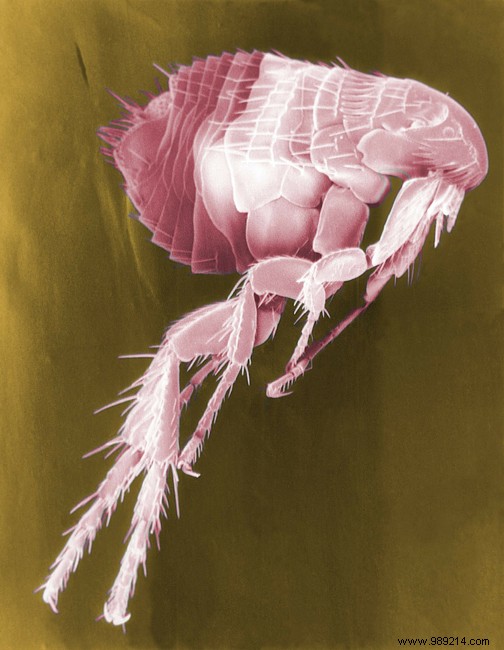
Most of the time, flea bites are without great risk for humans, but they are nonetheless very unpleasant. These tiny insects, real parasites measuring no more than 3.5 mm, proliferate very quickly after infesting domestic and companion animals such as dogs or cats for example. Fleas' favorite food is the blood of mammals, including humans, and they can store blood up to 15 times their weight. The female needs this blood to be able to reproduce and therefore allow the species to survive. What do flea bites look like, what are the risks for humans and how to get rid of them?
The flea bite is recognized by a skin lesion in the form of red dots most of the time located on the ankles and legs. The forearms are also sometimes affected. These bites are detected when they infect the skin and cause itching. An allergic reaction to these flea bites causes large red patches to appear on the skin. Blood stains in the bedding, combined with itching, can be a sign of a flea infestation.
In general, a flea bite does not have serious consequences in humans. However, it can cause intense itching in people allergic to the flea's saliva and require medical treatment. If the skin lesions caused by a flea bite become superinfected, fever and anemia may appear. The flea is also known to transmit tapeworms (or tapeworms) which affect the digestive system.
More rarely, if the flea is contaminated by an infected animal, it can carry and transmit the plague. These cases are now very rare in Europe. The flea can also carry infectious diseases such as typhus, a mild bacterial infection in the majority of cases.
Without really knowing why, some people are more prone to flea bites. For these people in particular, but also in general, it is first necessary to treat their pets with, in particular, flea collars or powdered insecticides. On the other hand, fleas being sensitive to strong odors that make them flee, it is recommended to prepare food based on garlic or lemon, both for pets and for humans. Garlic, lemon, but also essential oils of eucalyptus or cedar can be sprinkled in strategic corners of the house or on the ankles and feet at bedtime to scare away fleas.
After one or more flea bites, it is advisable to wash the wounds with soap and warm water and apply an antiseptic. Applying ice also helps relieve itching and reduce any blisters. The best, but not the easiest thing to do is to try not to scratch to avoid infecting the wounds left by the flea bites with the surrounding bacteria. For people who are very reactive to bites, taking an antihistamine is necessary and if the wounds become superinfected, a visit to the doctor is recommended.
To get rid of fleas and prevent their bites, washing the floor with detergent is necessary to remove flea eggs and larvae. It is also necessary to vacuum regularly in hidden and poorly lit areas of the house, living conditions appreciated by fleas. Frequent washing of bedding and clothing is recommended to eliminate these pests.